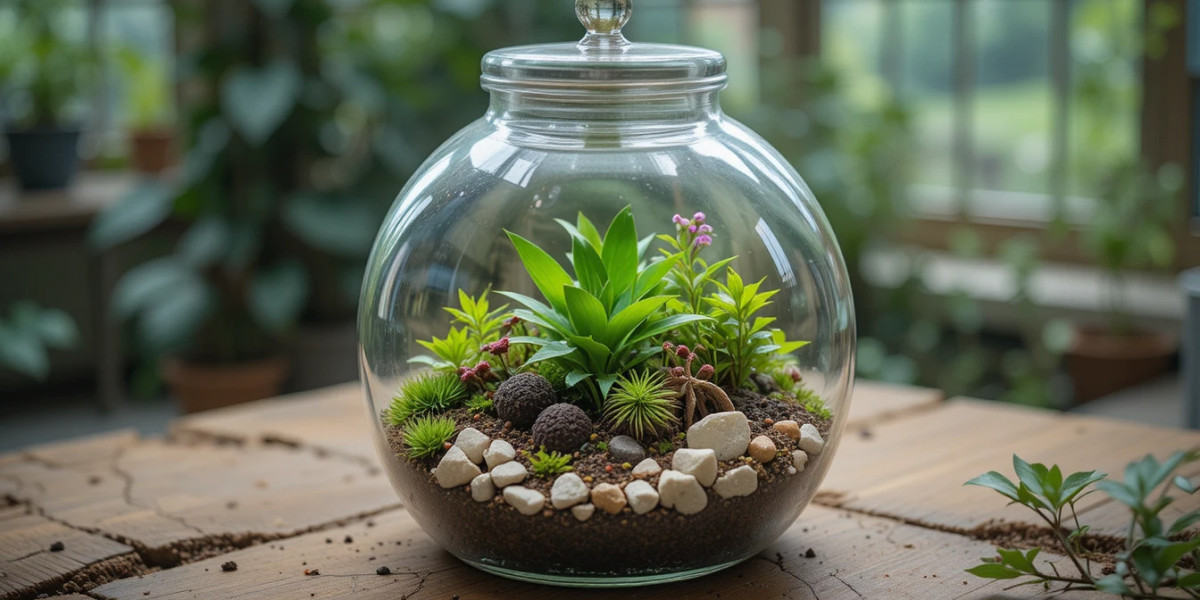A terrarium workshop in Singapore offers a refreshing way to reconnect with nature through creativity and learning. These workshops teach participants how to design and build miniature indoor gardens enclosed in glass containers. Terrarium making blends art, science, and sustainability, making it a popular activity among nature enthusiasts, students, and corporate teams. Singapore’s growing interest in eco-friendly crafts has made terrarium workshops a meaningful experience for people of all ages.
Understanding Terrarium Workshops
Terrarium workshops introduce the concept of creating self-sustaining mini-ecosystems in glass containers. Participants learn how plants, soil, water, and light interact within a controlled environment.
What Is a Terrarium?
A terrarium is a small, enclosed garden usually made in glass jars or containers. It allows plants to grow in a miniaturized ecosystem that recycles moisture through evaporation and condensation. Depending on the design, terrariums can be open or closed systems.
Purpose of a Terrarium Workshop
The main purpose of a terrarium workshop is to educate participants about plant care, sustainable living, and environmental awareness. It combines theoretical learning with hands-on experience in creating a self-sustaining plant habitat.
Who Can Attend
Terrarium workshops in Singapore are open to everyone from beginners and hobbyists to families and corporate teams. They are suitable for people interested in art, gardening, or eco-friendly crafts.
The Process of Terrarium Making
The process of terrarium creation involves several steps, each designed to teach participants about balance and design in miniature ecosystems.
Step 1: Selecting Materials
Participants begin by choosing the right materials, including glass containers, soil layers, pebbles, activated charcoal, moss, and small plants. Instructors explain the role of each material in maintaining the terrarium’s balance.
Step 2: Preparing the Base Layer
Pebbles or gravel are placed at the bottom to create drainage. This prevents water from stagnating and damaging plant roots.
Step 3: Adding Activated Charcoal
A thin layer of activated charcoal is added to absorb odors and impurities. This helps keep the terrarium fresh and free from mold.
Step 4: Layering the Soil
Nutrient-rich soil is added next to support plant growth. The soil depth depends on the type of plants chosen for the terrarium.
Step 5: Plant Arrangement
Participants carefully place small plants like ferns, moss, or succulents inside the container. Instructors teach design principles such as balance, spacing, and height variation.
Step 6: Finishing Touches
Decorative elements like stones, figurines, or sand layers can be added to personalize the terrarium. These final touches enhance its visual appeal.
Types of Terrarium Workshops in Singapore
Terrarium workshops across Singapore cater to different skill levels and creative interests. They can be categorized based on design style and participant focus.
Beginner Terrarium Workshops
Beginner sessions cover the basics of terrarium care, layering, and plant selection. These are ideal for individuals new to plant crafts.
Closed Terrarium Workshops
Closed terrariums are sealed systems that create their own water cycle. They require minimal maintenance and are great for learning about self-sustaining ecosystems.
Open Terrarium Workshops
Open terrariums feature succulents or air plants that prefer drier conditions. These workshops emphasize design and arrangement rather than moisture balance.
Corporate Terrarium Workshops
In Singapore, terrarium workshops are often used for team-building activities. They encourage collaboration, creativity, and mindfulness among employees.
Children’s Terrarium Workshops
Workshops designed for children focus on environmental education and hands-on fun. They teach basic plant care and spark curiosity about nature.
Learning Objectives of Terrarium Workshops
Terrarium workshops combine creativity and science, helping participants understand plant life and ecological balance.
Understanding Mini Ecosystems
Participants learn how plants, soil, and water interact within a confined environment. This fosters appreciation for natural systems.
Developing Design Skills
Arranging plants and decorative items teaches visual balance and spatial awareness. Participants gain insight into artistic composition.
Encouraging Sustainable Practices
Workshops emphasize reusing containers and reducing waste. They promote sustainability through green crafting.
Building Mindfulness
Creating terrariums helps participants slow down and focus. The hands-on process promotes relaxation and mindfulness.
Benefits of Attending a Terrarium Workshop in Singapore
A terrarium workshop provides more than just artistic enjoyment. It offers personal, educational, and environmental benefits.
Stress Relief and Relaxation
Working with plants reduces stress and promotes calmness. The process of layering soil and arranging plants brings mindfulness and focus.
Hands-On Learning
Participants gain practical experience in plant care, soil layering, and moisture control. This knowledge can be applied to home gardening.
Enhancing Creativity
Designing terrariums allows for self-expression. Each creation is unique, reflecting the maker’s personality and imagination.
Eco-Friendly Awareness
Workshops in Singapore promote green habits by encouraging participants to use recyclable materials and natural elements.
Social Connection
Group workshops create opportunities for collaboration and communication. Participants share ideas and enjoy collective learning.
Decorative and Functional Outcome
Terrariums make beautiful, low-maintenance home decorations that purify indoor air and bring a touch of nature to living spaces.
Terrarium Care Tips
Proper care ensures that the terrarium remains healthy and visually appealing long after the workshop ends.
Light and Placement
Place the terrarium in indirect sunlight. Too much direct light may cause plants to wilt, while too little can hinder growth.
Watering Routine
Closed terrariums require minimal watering due to their self-sustaining environment. Open terrariums need light misting when the soil appears dry.
Pruning and Maintenance
Trim overgrown plants to maintain balance and prevent overcrowding. Remove any decaying leaves to avoid mold buildup.
Cleaning the Glass
Keeping the glass clean enhances visibility and maintains the terrarium’s beauty.
Educational and Environmental Impact
Terrarium workshops in Singapore support green education and sustainability efforts. They connect urban communities to nature in creative ways.
Promoting Environmental Awareness
By understanding how terrariums work, participants learn about ecosystems, water cycles, and sustainable living.
Encouraging Green Lifestyles
Workshops inspire individuals to add more greenery to their surroundings, even in limited spaces like apartments or offices. For more information click here..
Supporting Urban Gardening
In a city like Singapore, where space is limited, terrariums offer a compact and efficient way to enjoy nature indoors.
Conclusion
A terrarium workshop in Singapore provides an enriching experience that combines creativity, learning, and sustainability. Participants gain hands-on knowledge of mini-ecosystems while exploring the art of plant arrangement. These workshops promote mindfulness, reduce stress, and encourage eco-friendly habits in an enjoyable and accessible way. Whether for personal relaxation, educational purposes, or team bonding, terrarium workshops help people reconnect with nature and cultivate green living in urban spaces.







